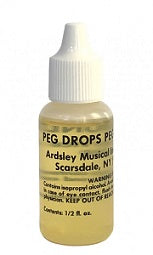There are some Violins that were made in the 17th century, and they are still played on, they still sound the same as they sounded 400 years ago. On the other hand, some Violins that were made 10 years ago are already unplayable. Wooden string instruments, especially bowed ones, are extremely fragile and vulnerable. Any string player has to be aware of things that can hurt their beloved Violin or other instruments of the family. In this article we are going to talk about three instrument care tips, which include looking after and protecting your instrument.
1. The Violin loves to be clean!
Look at your Violin and see if it is clean. If not, clean it right now and try playing. You will see how much better it will sing! Rosin residues, greasy hand stains, natural dust, all these dampen the vibration of the Violin parts, thus affecting the sound. Not only will your Violin sound better, but you yourself will play better on the Violin that is clean and shiny.
Most rosin accumulates in the area between the bridge and the fingerboard, which make sense, because this is where the bow, abundantly rosined, makes contact with the violin. The rosin dust, if not removed after each practice session or performance, melts and then solidifies, turning into a kind of glue that is very hard to remove. Clean out the rosin regularly and do it properly. Some professional players use alcohol to clean the strings and the fingerboard. This method is very effective, but not recommended. Even a drop of alcohol on the lacquered surface of the violin will instantly provoke a chemical reaction with the varnish, as a result of which the violin will get an ugly stain that cannot be removed. On some cheap instruments, fingerboards are made not from ebony or rosewood, but hardwood covered with black paint. Alcohol will easily dissolve the paint and the violin will take on a shabby look.
We recommend using an alcohol-free dissolvent to clean the strings.
Pirastro String Oil

Alcohol based string cleaners are very efficient, but have to be used carefully. Alcohol dissolves not only the rosin, but the spirit varnish as well, when applied on the body of the instrument.
PETZ String Cleaner

Excellent string cleaner designed by PETZ, Austria.
For the lacquered parts of the Violin, you will need another cleaner. Here are some brands that we would recommend.
PETZ Rosin Remover

Petz Rosin Remover safely removes old rosin residue and dirt without damaging wood or varnish. It can be used on valuable antique instruments.
To use the cleaner simply apply a small amount to a dry cloth and gently rub the rosin away.
After you have cleaned the instrument you can then apply Petz Polish to give the instrument back its lustre.
Hidersol 2 in 1 Cleaner & Polish

Hidersine Hidersol was first developed in 1912 and has been a staple in violin workshops ever since. It is recommended for the cleaning and reviving of traditional stringed instrument varnish. 25ml per bottle.
Peter Dawson's Violin Cleaner-Polish

2. Keep the pegs in working shape.
- Clean it thoroughly. Alcohol can be used for that with pegs made from ebony, rosewood or boxwood, i.e. from the wood that has natural colour and is not painted. Don't use any oily substance.
- Apply peg paste or peg drops to the peg, enough to make it turn smoothly, but not too much.
Hill Peg Composition

The original blend of: Graphite Powder, Petroleum Jelly, China Clay, Talc and Red Iron Oxide. Perfect for pegs which ceased to turn smoothly.
Pi
rastro Peg Compound

Will help to make tuning the strings simple and easy. Coat the surface of the pegs once or twice with peg-compound where they come into contact with the peg box.
Ardsley Peg Drops

The best way to stop slipping pegs.
3. Dry air is the worst enemy!
String instruments are made from wood. It is spruce for the face and maple for the sides and the back. Unlike metal, or carbon fibre, wood is highly susceptible to environmental influences, especially to humidity change. Dry air during winter makes the Violin sound harsh. It can even destroy the instrument causing open seams and cracks. That is why using a humidifier is highly recommended.
GEWA Violin/Viola Humidifier
GEWA Cello Humidifier
This type of humidifiers has been very popular among professional string player for decades. Very simple low-cost, but efficient, way to protect the instrument against dryness
Directions:
1. Immerse GEWA Humidifier in water
2. Squeeze GEWA Humidifier to remove excess water. Gently wipe the outer tube dry. Place inside the instrument through one of the f-hole lobes.
Stretto Violin/Viola Humidifier

Instrument case humidifier for violin, viola, mandolin, and other smaller cases. Long lasting and effective, easy to use.
4. Anobium punctatum or woodboring beetle

In the larval stage it bores in wood and feeds upon it. This little worm eats any kind of wood, while being a great connoisseur of bowed instruments, finding them especially tasty. The unexpectedly formed neat hole on the body of your violin might not be a very pleasant surprise. There is an excellent remedy for this pest that does not cost a penny: PRACTICE MORE! Fortunately, our gourmet hates the sound of the violin.
